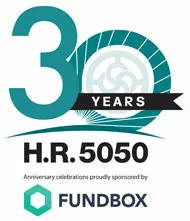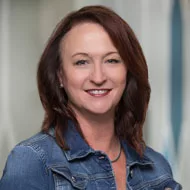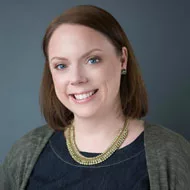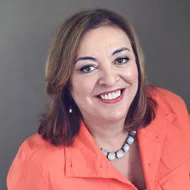By Susan Shain
 This year marks the 30th birthday of many important things: Sega Genesis, “Matilda,” Koosh, “The Wonder Years” and Adele.
This year marks the 30th birthday of many important things: Sega Genesis, “Matilda,” Koosh, “The Wonder Years” and Adele.
But for American women, the most important 30th birthday is held by a bill many have probably never heard of: H.R. 5050. Signed into law by President Ronald Reagan on October 25, 1988, this legislation changed the game for female business owners.
“It truly was the Big Bang,” says Virginia Littlejohn, co-founder of Quantum Leaps. “It transformed the landscape for women’s entrepreneurship.”
Why H.R. 5050 Matters
As little as 30 years ago, women couldn’t obtain business financing on their own. They needed a male cosigner such as a partner, husband or friend—with some women even enlisting their underage sons to cosign for them!
But in 1988, after tireless work by women around the country, former Congressman John LaFalce introduced H.R. 5050, also known as the Women’s Business Ownership Act.
Although it’s best known for freeing women of the male cosigner requirement, and thereby allowing them to apply for funding on their own, it also included provisions that:
- Created the National Women’s Business Council, which performs research on women-owned businesses and advances policies that support them
- Established Women’s Business Centers around the country
- Required the government to collect data on all women-owned businesses (rather than just sole proprietorships)
“It was truly on the money—then and now—because of how it transformed, and continues to shape, the way women entrepreneurs start and grow their businesses,” wrote 2017-2018 NAWBO National Board Chair Kathy Warnick. “It’s one of those pieces of legislation that as time goes on, you hope the next generation of women entrepreneurs, and the generations after, will never forget.”
Four Businesses Made Possible By H.R. 5050
Between 1997 and 2017, the number of women-owned businesses grew by 114% in the U.S. (eclipsing businesses in general, which only grew by 44%).
Nearly 900 women-owned businesses are launched every single day, and some of them—the ones whose owners took out loans without a cosigner—might not be here without H.R. 5050.
Here are four of their stories.
 Sitters Studio
Sitters Studio
When Kristina Wilson graduated with a music degree from NYU, she “became obsessed” with how few jobs “truly supported artists.” At the time, she was working in finance, where executives often complained about the lack of quality caregivers for their children.
She put the two ideas together, and in 2006, launched Sitters Studio, an agency that hires professional artists to do art with children while also providing care. A few years later, she decided to open a small preschool, and for the first time, needed capital.
Though her big bank denied her request for a loan, she soon met a regional banker at a small business event. “Once I got a banker who was willing to truly understand my business, I was able to get the loan,” she says. (That being said, it took “a lot of paperwork and a lot of waiting”!)
Her thoughts on H.R. 5050: “I am ashamed to say I had no idea about the H.R. 5050 legislation. As happens so often in life, you don't even question the fact that something is possible…it just is. Learning that all women used to have a man cosign their loan is totally shocking to me. I owe so much of my life to amazing women before me.”
 Allegheny Science & Technology Corporation
Allegheny Science & Technology Corporation
After years of working for other government contractors, Arria Hines believed she “could do it better.”
So in 2009, she founded Allegheny Science & Technology Corporation (AST), a technology and energy consulting firm with expertise in applied science and technology, business and data analytics, IT strategy and integration and portfolio and project management.
Five years later, her business won a $90 million Department of Energy contract. “We quickly determined we’d need a larger line of credit to maintain cash flow,” she says. “We had always maintained a good relationship with our local bank and had already done the projections and cash-flow analysis.” Thanks to that relationship, AST secured a $2 million CAPLines Loan from the Small Business Administration (SBA)—without a cosigner.
Her thoughts on H.R. 5050: “It’s what made woman-owned businesses possible and enabled women entrepreneurs to obtain their dreams.”
 Rover-Time
Rover-Time
Julia Rohan launched Rover-Time with just $500, which she spent on a logo and website. Over the past six years, however, her dog-walking and pet-sitting business has grown significantly—and is projected to earn $500,000 in 2018.
Recently, Rohan turned her 16 independent contractors into employees, and says: “As we adjusted to the new costs of doing business, I realized I needed funding to support our operational cash flow.”
So she obtained financing from Paypal, followed by several alternative fintech lenders, and finally, from a small local bank. “It was well worth the time and effort,” she says of her last loan. “The terms we agreed on were so much more fair and supportive of my long-term financial goals.”
Her thoughts on H.R. 5050: “It absolutely changed the path for all women-owned businesses. To think that just 30 years ago my husband would need to be involved, or tie his credit to my risks, is just jaw-dropping.”
 Strategic Consulting Partners
Strategic Consulting Partners
More than two decades ago, Monica Gould was a corporate executive with two young daughters. “I knew I couldn’t be the mom I wanted to be and work for someone else,” she says.
So, seeking better balance, she opened Strategic Consulting Partners, a management consulting firm that specializes in strategic planning, organizational development, operations effectiveness and leadership development and training.
Fourteen years later, she received her first government contract, which meant she had to hire two full-time, high-level employees, while also waiting 90 days for payment. For funding, she turned to the SBA for an Express Loan.
Her thoughts on H.R. 5050: “As a single mother, seeking funding to expand my business would not have been possible if I had to get a man to co-sign. I have to sign and guarantee my business loans, which wouldn’t have been possible until this legislation.”
There’s Still More Work to Do
We’re thankful that H.R. 5050 paved the way for female entrepreneurs. But we’re also aware there’s still a long way to go.
Though the number of women-owned businesses has grown exponentially over the past few decades, the share of people employed by them grew only from 7% to 8%. The share of revenues earned by women-owned businesses fared even worse: It declined, from 4.4% to 4.2%. And, when it comes to funding, women still receive 50% less than men.
“While the [H.R. 5050] legislation is great, there is still more that can and should be done,” says Monica. In particular, she hopes the number of SBA set-aside contracts for women-owned businesses will increase.
Arria feels the same way, and recommends her fellow entrepreneurs join organizations like Women Impacting Public Policy, Women in Technology, Women In Defense and NAWBO.
“To empower, encourage and educate woman entrepreneurship, we need to stay engaged,” she says. “Together, we can move the needle forward to offer more support and services to women…and create more of an emphasis on business expansion.”
If you’re in need of financing, talk to your neighborhood bank, visit your local women’s business center or consider alternative business loans if you need capital quickly.
And, however you get funding, take a moment to mentally thank the women who came before you—and who brought H.R. 5050 to life.
About the Author:
Susan Shain is a freelance writer and contributor to the Fundbox blog, where she covers women and entrepreneurship. Fundbox is committed to empowering business owners by democratizing access to credit.

